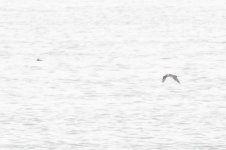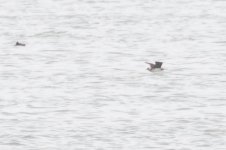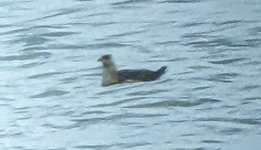BikeandBird
Well-known member
Hello all,
a couple of days ago I saw this Jaeger at Gülper See in Eastern Germany. Unfortunately I did not get a good look at it as it took off right after I discovered it. I struggled to see it at the distance and only managed to get the shots attached and I do not have any other impressions from the bird as I did not find it through the scope again.
I don't have great experience with jaegers at all. I took a look at my photos to day and find the bird impossible for me to ID. Some days after my observation another birder reported a Parasitic Jaeger from the same location. I would be surprised if it wasn't the same bird. His description is fitting for Parasitic but his photos do not allow me to confirm this ID.
I wonder if any of you would dare to ID my bird at species level?
Thanks in advance
Leo
a couple of days ago I saw this Jaeger at Gülper See in Eastern Germany. Unfortunately I did not get a good look at it as it took off right after I discovered it. I struggled to see it at the distance and only managed to get the shots attached and I do not have any other impressions from the bird as I did not find it through the scope again.
I don't have great experience with jaegers at all. I took a look at my photos to day and find the bird impossible for me to ID. Some days after my observation another birder reported a Parasitic Jaeger from the same location. I would be surprised if it wasn't the same bird. His description is fitting for Parasitic but his photos do not allow me to confirm this ID.
I wonder if any of you would dare to ID my bird at species level?
Thanks in advance
Leo







